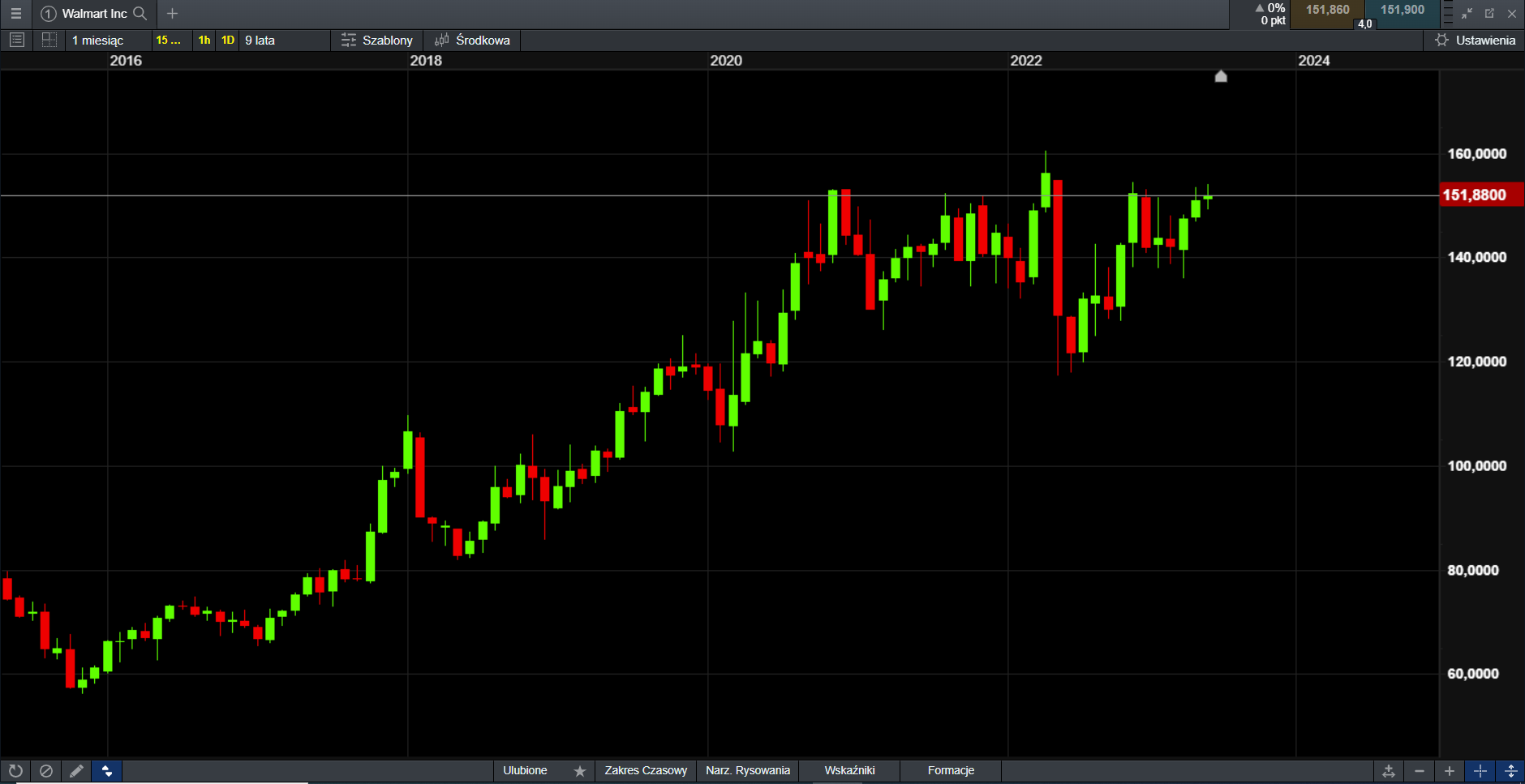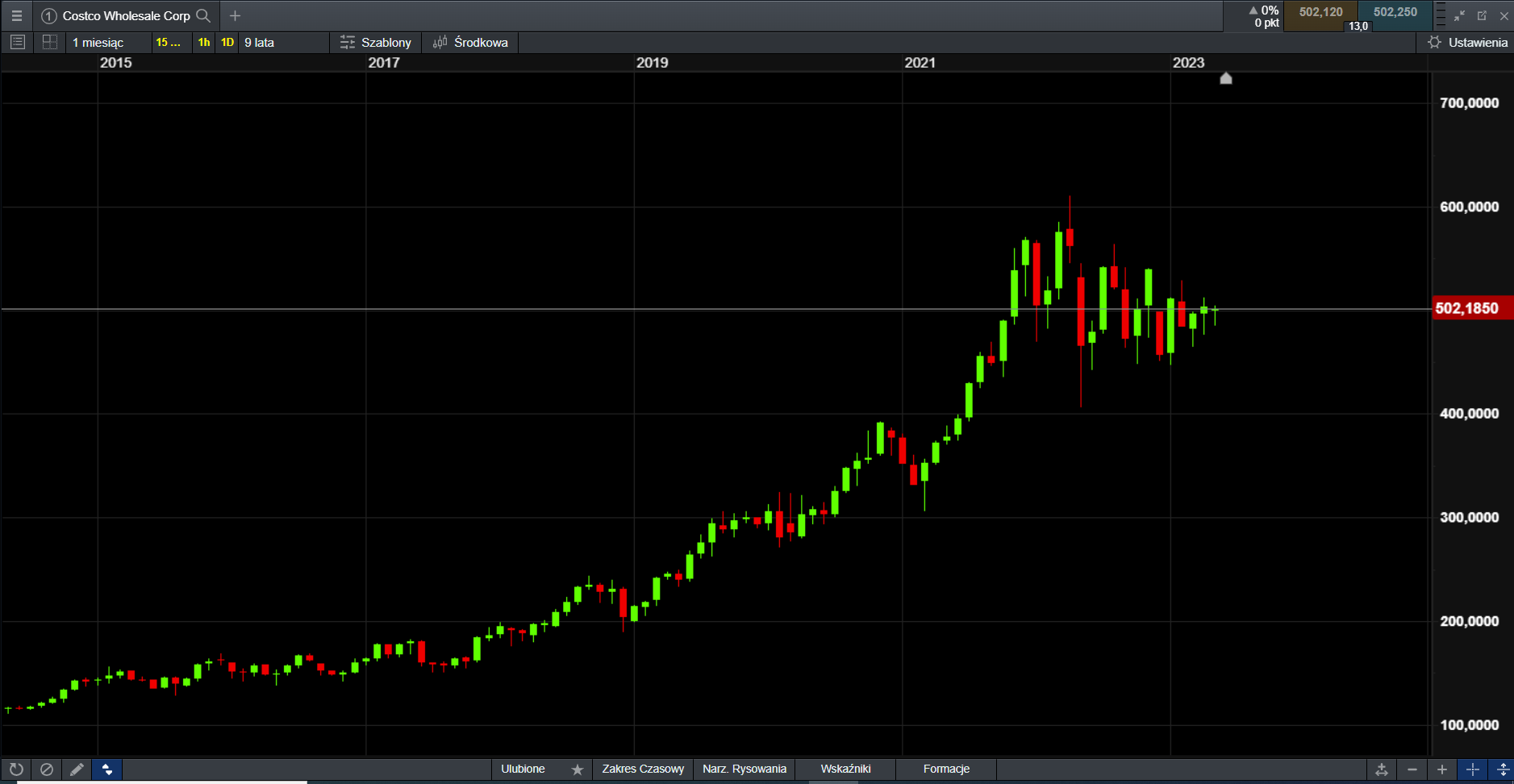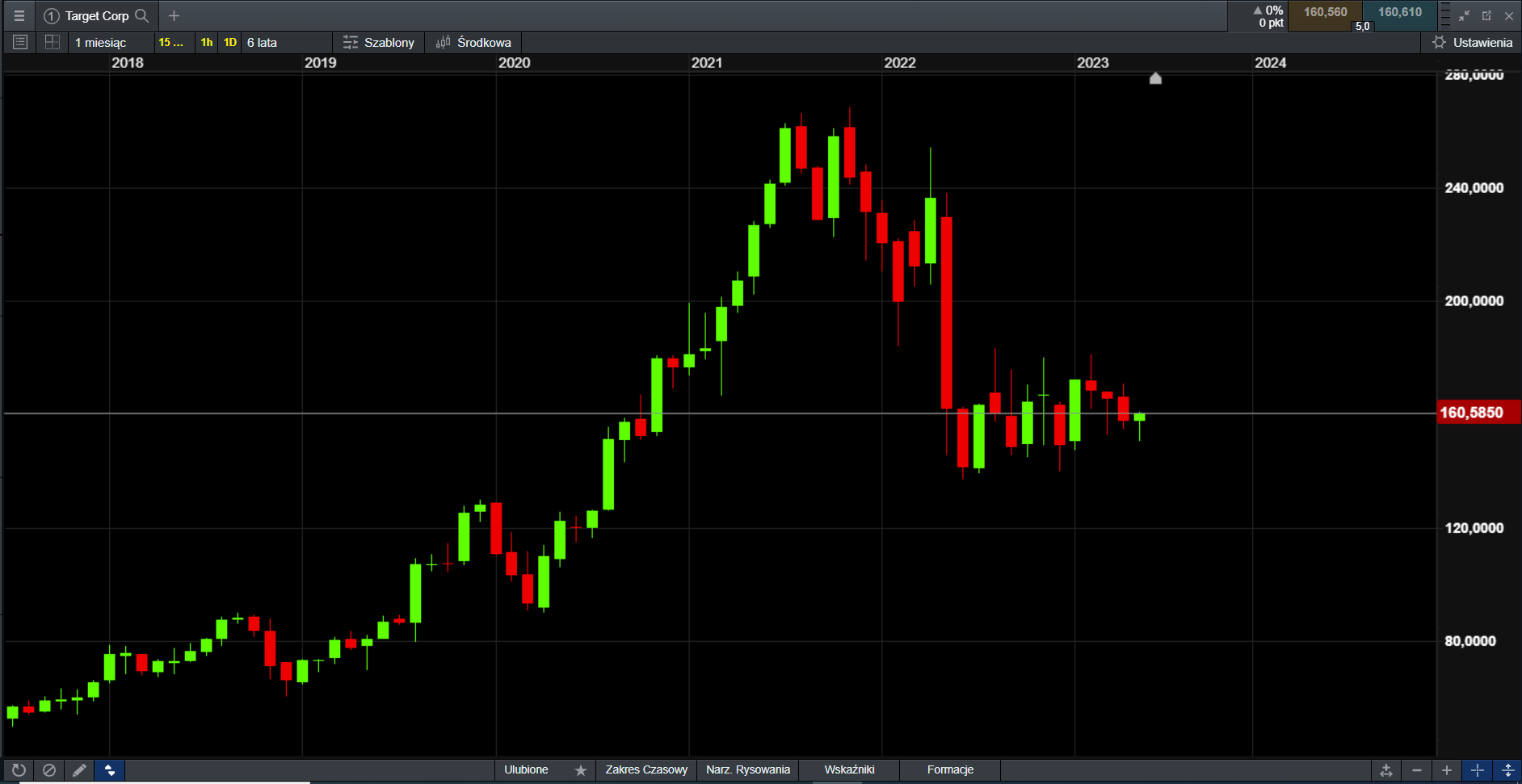What You Need to Know - Grocery Retail Stocks Ahead of Walmart and Target Earnings
The food industry has always been considered a bastion of stability, where sales are not affected by changes in economic conditions or technological progress. Now that we are dealing with high inflation and the revolution in artificial intelligence, is this view still valid?
While some grocery stores are struggling with rising labor costs and the unpredictability of inventory management, others are seeing unprecedented growth thanks to smart decisions to innovate and adapt to their customer base.
In this article, we'll delve into the current state of grocery stock prices and analyze the key players and trends in this fast-moving market ahead of the earnings reports from giant national grocery chains like Walmart and Costco and Target.
GUIDE: Food market, or how to invest in food?
Why do investors invest in grocery stocks?
The best thing about defensive sectors like consumer staples is that they are investments for probably every situation. Whether it's a bear or bull market, there is constant demand for the goods and services that grocery chains provide, as food is a basic need. While some critics may describe these types of businesses as low-margin, top grocery chains like Walmart, Costco, and Target exhibit low volatility and steady revenue streams that allow investors to weather any storm. In order not to lose market share to the competition, these large grocery chains do not rest on their laurels and actively introduce innovations that keep them one step ahead of the competition.
From developing their own e-commerce platforms to offering home delivery options, these grocery chains are showing their ability to adapt to changes in consumer behavior and economic conditions.
What keeps defensive investors coming back is an attractive capital structure, consistent dividend yields and a focus on innovation. This represents an attractive investment opportunity for investors looking for consistent and reliable returns.
Want to discover the potential of these investment opportunities?
Here are our top picks to have on your watchlist for top grocery stocks ahead of earnings season.
What are the risks of investing in grocery stocks?
While these are places to stock up on necessities, that doesn't mean grocery stocks are immune to things like inflation and supply chain disruptions. Typically, large grocery chains rely on their price advantage to pass on the higher cost of goods sold to consumers. Unfortunately, their low net margins can quickly dissipate if they are forced to shoulder the burden of more expensive goods. This was most recently seen during the pandemic, when inventory and supply chain bottlenecks put a heavy strain on the food industry's balance sheets.
Another risk worth mentioning is the high dependence on existing employees. Employees are the lifeblood of the grocery chain and play a key role in ensuring the smooth running of daily operations, from stocking the shelves to providing a high-quality customer experience. Should there be a sudden strike or increase in wage pressure, it could lead to huge losses for the grocery store, as already low margins are threatened by additional costs and reduced profit levels.
The largest publicly traded grocery stock in the US
Walmart (NYSE: WMT) – Unparalleled scale
Founded in 1962, Walmart is one of the largest grocery chains in the world, with a presence in almost every country and an ever-growing market share. The company has achieved tremendous success through a combination of supply chain management, operational excellence and the use of technology to optimize sales and customer experiences. While traditional grocery chains can be resistant to changing old systems, Walmart has taken full advantage of technology and partnered with tech leaders such as Microsoft i Googleto use their technological solutions. This helped optimize operational efficiency and customer service.

Walmart stock CFDs. Platform Next Generation CMC Markets
By developing an extensive network of suppliers and distributors and implementing rigorous quality control standards for all products sold in stores, Walmart is able to pass on existing savings to its customers and offer competitive prices, while ensuring a healthy profit margin of around 3%.
Add to this automated warehouses and advanced inventory tracking systems, and you get a hyper-efficient grocery chain that is well-prepared to weather any macroeconomic turmoil. Although supply chain constraints related to the pandemic initially caused margin concerns, Walmart was able to quickly adjust to bottleneck issues and turn the company around within a year as WMT shares are down just 5% from all-time highs.
Costco (NASDAQ: COST) - Membership and Hot Dogs
Costco is the world's second-largest retailer with a reputation for consistently low prices, high-quality merchandise, and excellent customer service. Although Costco's business model involves razor-thin margins and maintaining an attractive pricing strategy, as with the rest of its rival grocery stores, it stands out in two ways, namely wholesale and reputable membership-based warehouse clubs. The company's stores are designed to be simple, with high ceilings, concrete floors, and large open spaces to accommodate bulk products.

Costco stock CFDs. Platform Next Generation CMC Markets
By charging an annual membership fee, Costco customers have access to exclusive discounts and offers. The membership model also creates a sense of exclusivity and loyalty among members who feel compelled to shop at Costco for their daily needs to get the most out of their membership. Moreover, Costco's bulk buying strategy allows the company to negotiate lower prices from suppliers, which enables it to offer customers criminally low prices while maintaining a profit.
Interestingly, while we usually see grocery stores go all out when it comes to cutting costs to maximize price efficiencies, Costco does things a bit differently with its $1,50 hot dog and drink. While there have been inflationary pressures to raise the price of this crowd-favorite combo of food and drink, CFO Richard Galanti has rebuffed these pressures and assured customers that Costco plans to keep the offer affordable forever.
It is this commitment to appeasing members, along with its highly profitable business model, that has made Costco such a popular grocery stock option among investors looking to invest in the sector.
Target (NYSE: TGT) - Strategic Approach to Clients
Target supermarkets have been able to maintain their popularity among other top grocery chains by implementing a strategic approach that appeals to customers.
The store is able to thrive in the competitive food industry with a wide range of quality products, from clothing and homeware to electronics and toys. With competitive prices and additional services such as contactless delivery, same-day delivery, and a focus on quality online shopping through its e-commerce website, Target effectively offers customers a one-stop-shop experience that goes beyond conventional visits to large retail stores.

Target stock CFDs. Platform Next Generation CMC Markets
In terms of profitability, Target is also well placed to weather the storm as it consistently generates strong profit growth despite being a fraction of market cap Walmart and Costco. This can be attributed to the company's aggressive cost-cutting efforts, which have allowed it to reduce expenses while maintaining attractive customer service standards through investments in advanced technologies such as automation of sorting centers and artificial intelligence. As a result of this aggressive cost-cutting and effort to maximize efficiency, Target has been able to enjoy a strong and resilient level of profitability that benefits from the current inflationary environment.
Summation
All in all, investing in stocks of grocery stores like Walmart, Costco and Target ahead of their performance can have their advantages. These include stability, steady demand from the masses, and attractive dividend yields. However, you should be aware of the risks involved in investing in this industry, such as unexpected macroeconomic factors such as inflation, unemployment and consumer behavior, supply chain disruptions, wage pressures and labor disputes, and pay attention to key factors such as such as revenue growth potential, management efficiency and the company's readiness to innovate. By fully understanding the potential risks and rewards of the industry, a well-informed investor can take advantage of the stability of the grocery store industry and dependable returns while minimizing the potential downsides.
Walmart:
-
- P/E: 35,6, forward P/E: 24,7
- FY2024 sales projections: $628,45 billion
- EPS forecast for FY2024: 6,14
- Capitalization: USD 409,67 billion
- Publication of results: May 18.05.2023, XNUMX before the session
Costco:
-
- P/E: 36,9, forward P/E: 33,5
- FY2024 sales projections: $242,56 billion
- EPS forecast for FY2024: 14,42
- Capitalization: USD 222,65 billion
- Publication of results: May 25.05.2023, XNUMX
target:
-
- P/E: 26,9, forward P/E: 19
- FY2024 sales projections: $111,24 billion
- EPS forecast for FY2024: 8,47
- Capitalization: USD 74,11 billion
- Publication of results: May 17.05.2023, XNUMX before the session






















![Forex Club – Tax 9 – Settle tax on a foreign broker [Download the Application] Forex Club - Tax 9](https://forexclub.pl/wp-content/uploads/2024/02/Forex-Club-Podatek-9-184x120.jpg?v=1709046278)
![Trading View platform – solutions tailored to the needs of traders [Review] trading view review](https://forexclub.pl/wp-content/uploads/2024/03/trading-view-recenzja-184x120.jpg?v=1709558918)
![How to connect your FP Markets account to the Trading View platform [Guide] fp markets trading view](https://forexclub.pl/wp-content/uploads/2024/02/fp-markets-trading-view-184x120.jpg?v=1708677291)
![How to invest in ChatGPT and AI? Stocks and ETFs [Guide] how to invest in chatgpt and artificial intelligence](https://forexclub.pl/wp-content/uploads/2023/02/jak-inwestowac-w-chatgpt-i-sztuczna-inteligencje-184x120.jpg?v=1676364263)


![WeWork – the anatomy of the collapse of a company valued at $47 billion [WeWork, part II] wework bankruptcy story](https://forexclub.pl/wp-content/uploads/2024/04/wework-bankructwo-historia-184x120.jpg?v=1711729561)
![Adam Neumann – the man who screwed up Softbank [WeWork, part AND] adam neumann wework](https://forexclub.pl/wp-content/uploads/2024/04/adam-neumann-wework-184x120.jpg?v=1711728724)





![How to transfer shares to another brokerage office [Procedure description] how to transfer shares to another brokerage house](https://forexclub.pl/wp-content/uploads/2024/03/jak-przeniesc-akcje-do-innego-biura-maklerskiego-184x120.jpg?v=1709556924)

![The most common mistakes of a beginner trader - Mr Yogi [VIDEO] Scalping - The most common mistakes of a beginner trader - VIDEO](https://forexclub.pl/wp-content/uploads/2024/03/Scalping-Najczestsze-bledy-poczatkujacego-tradera-VIDEO-184x120.jpg?v=1711601376)
![Learning patience: No position is also a position - Mr Yogi [VIDEO] Scalping - Learning patience - No position is also a position - VIDEO](https://forexclub.pl/wp-content/uploads/2024/03/Scalping-Nauka-cierpliwosci-Brak-pozycji-to-tez-pozycja-VIDEO-184x120.jpg?v=1710999249)
![When to exit a position and how to minimize losses - Mr Yogi [VIDEO] Scalping - When to exit a position and how to minimize losses - VIDEO](https://forexclub.pl/wp-content/uploads/2024/03/Scalping-Kiedy-wyjsc-z-pozycji-i-jak-minimalizowac-straty-VIDEO-184x120.jpg?v=1710336731)
















